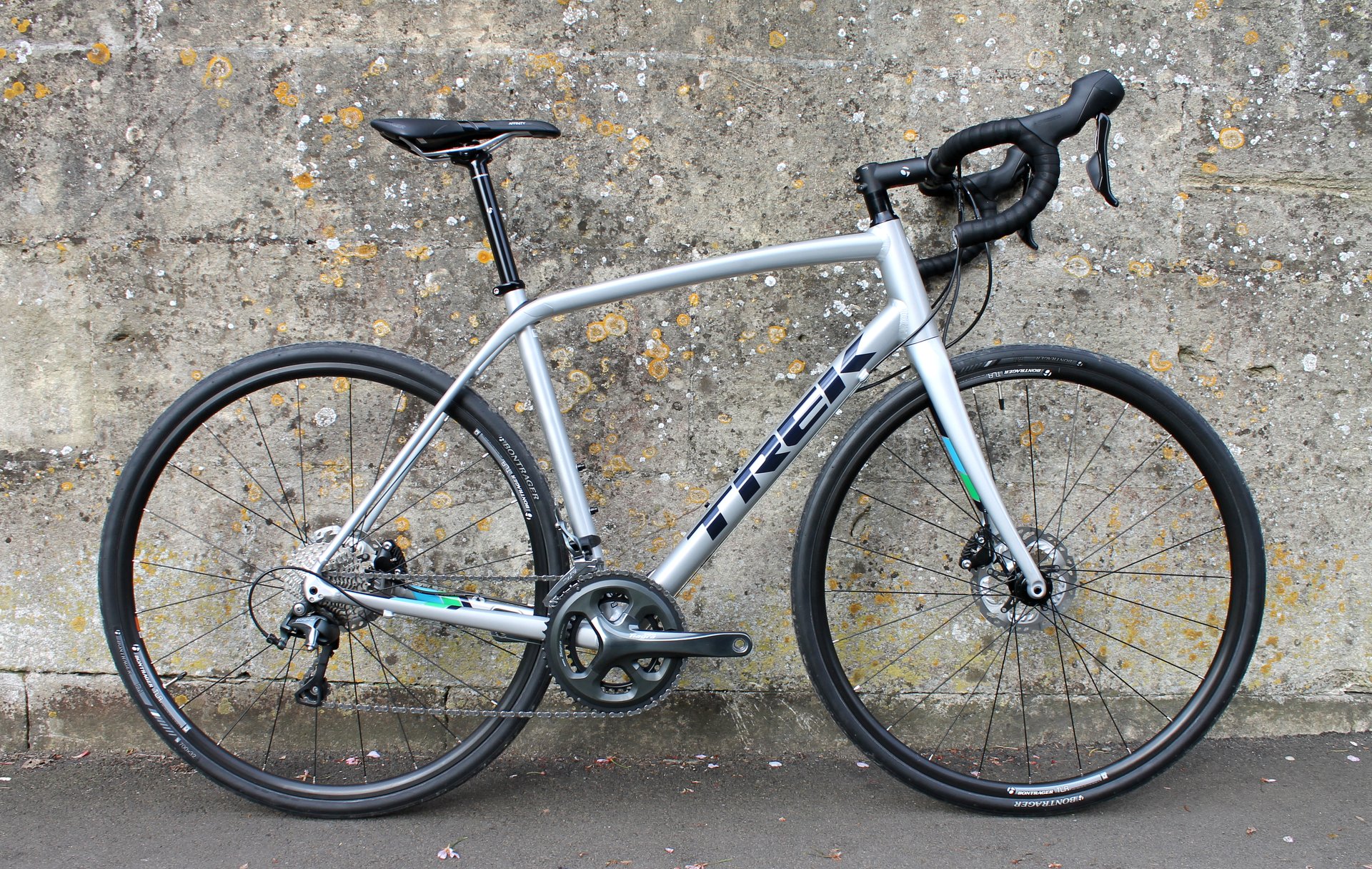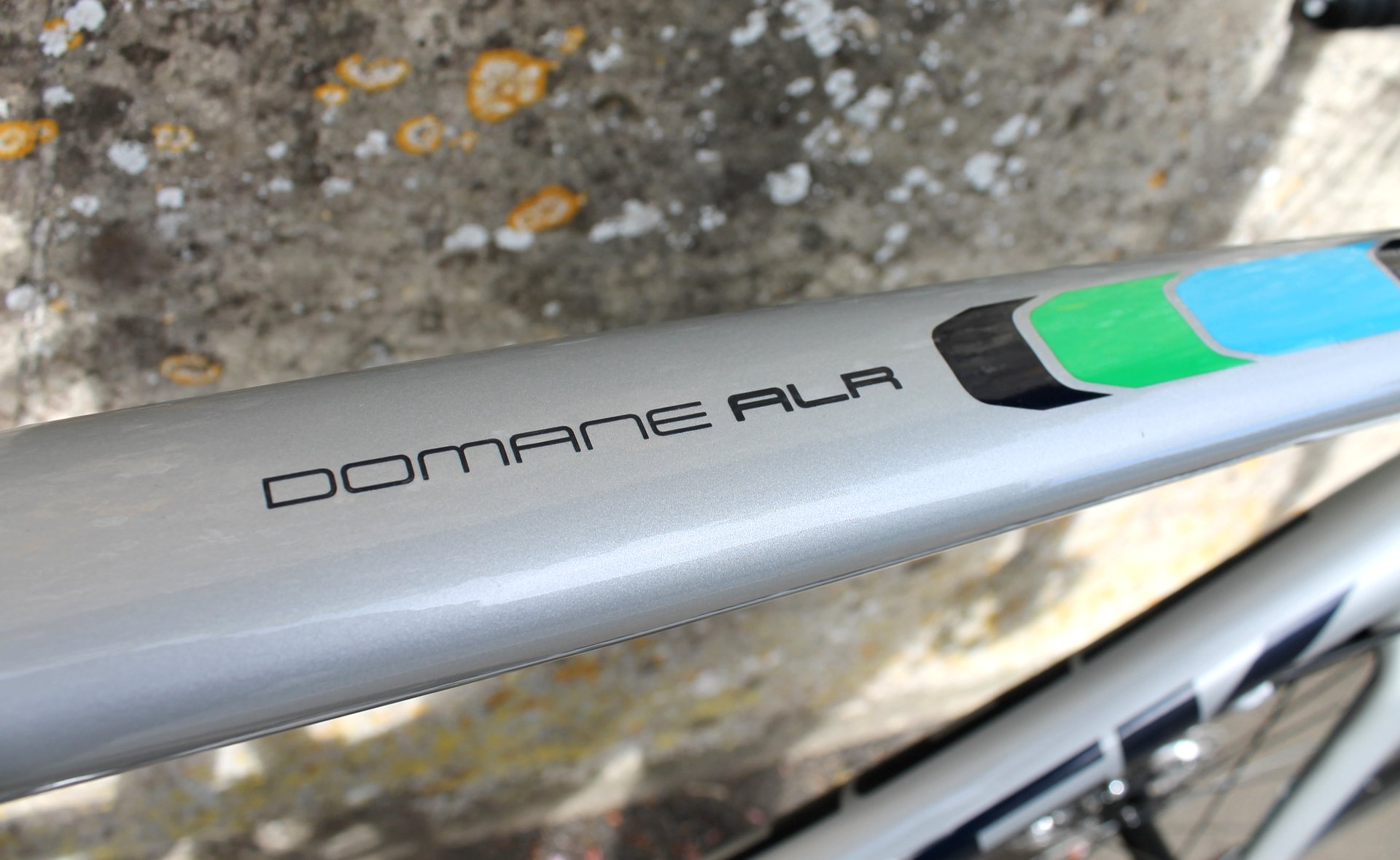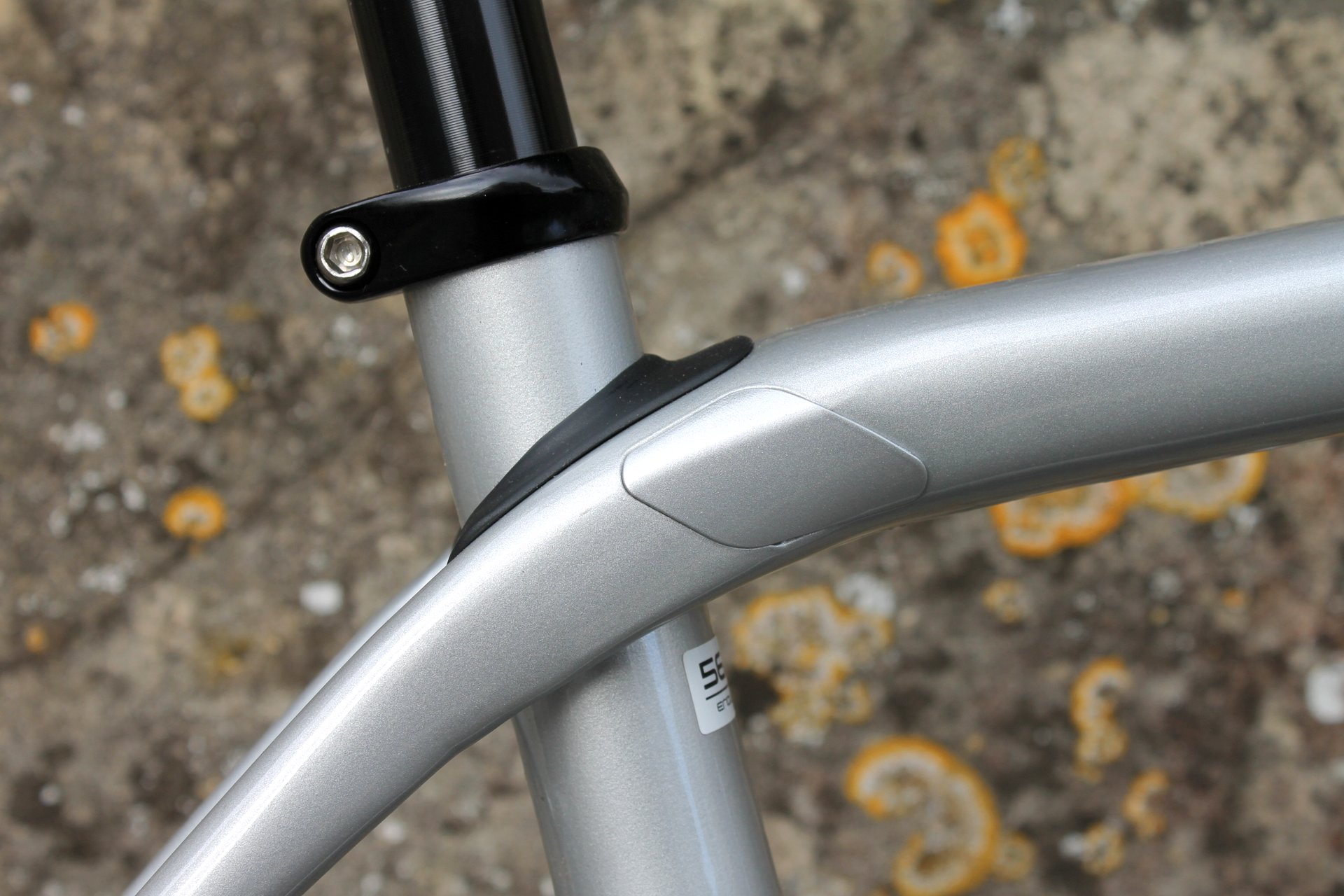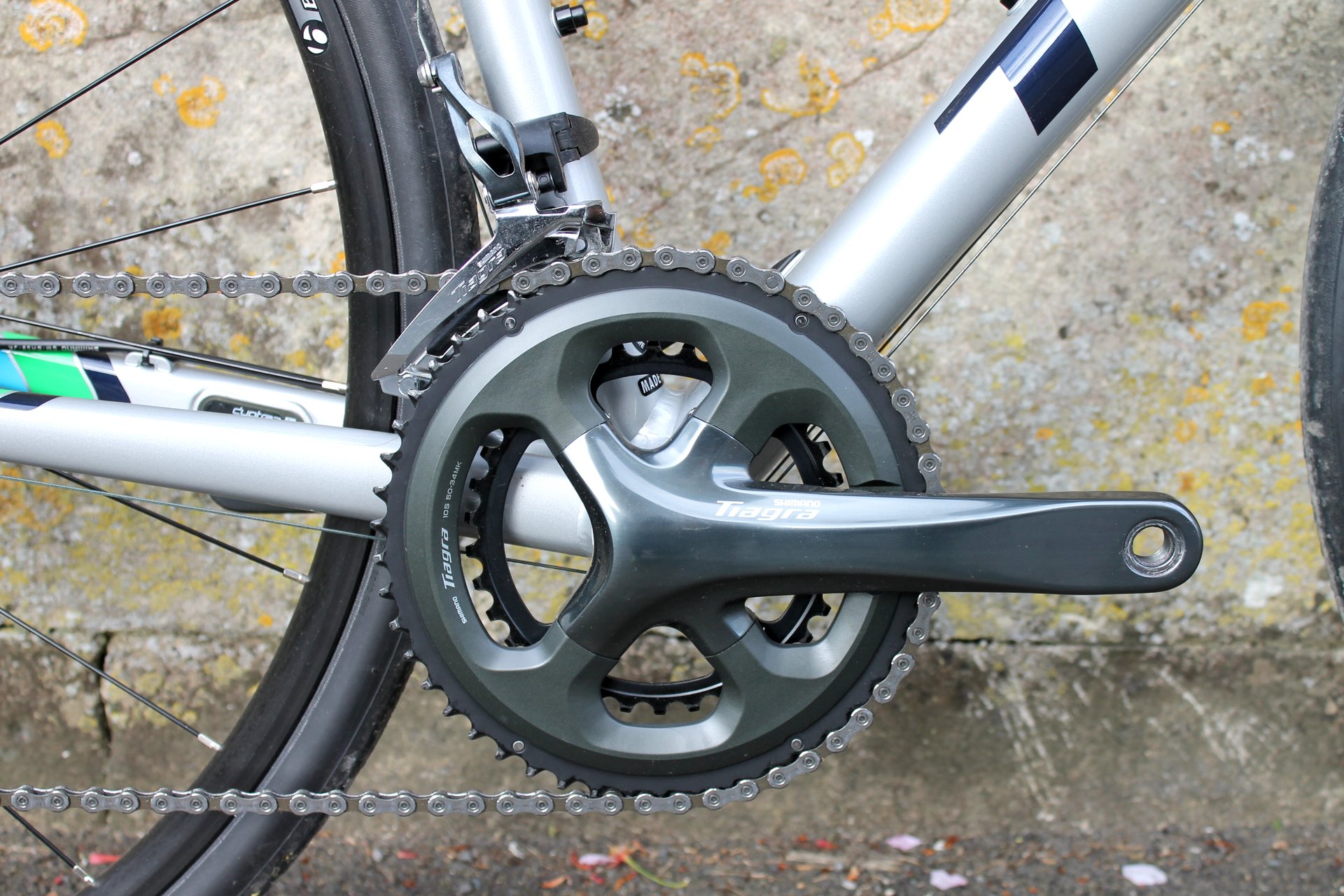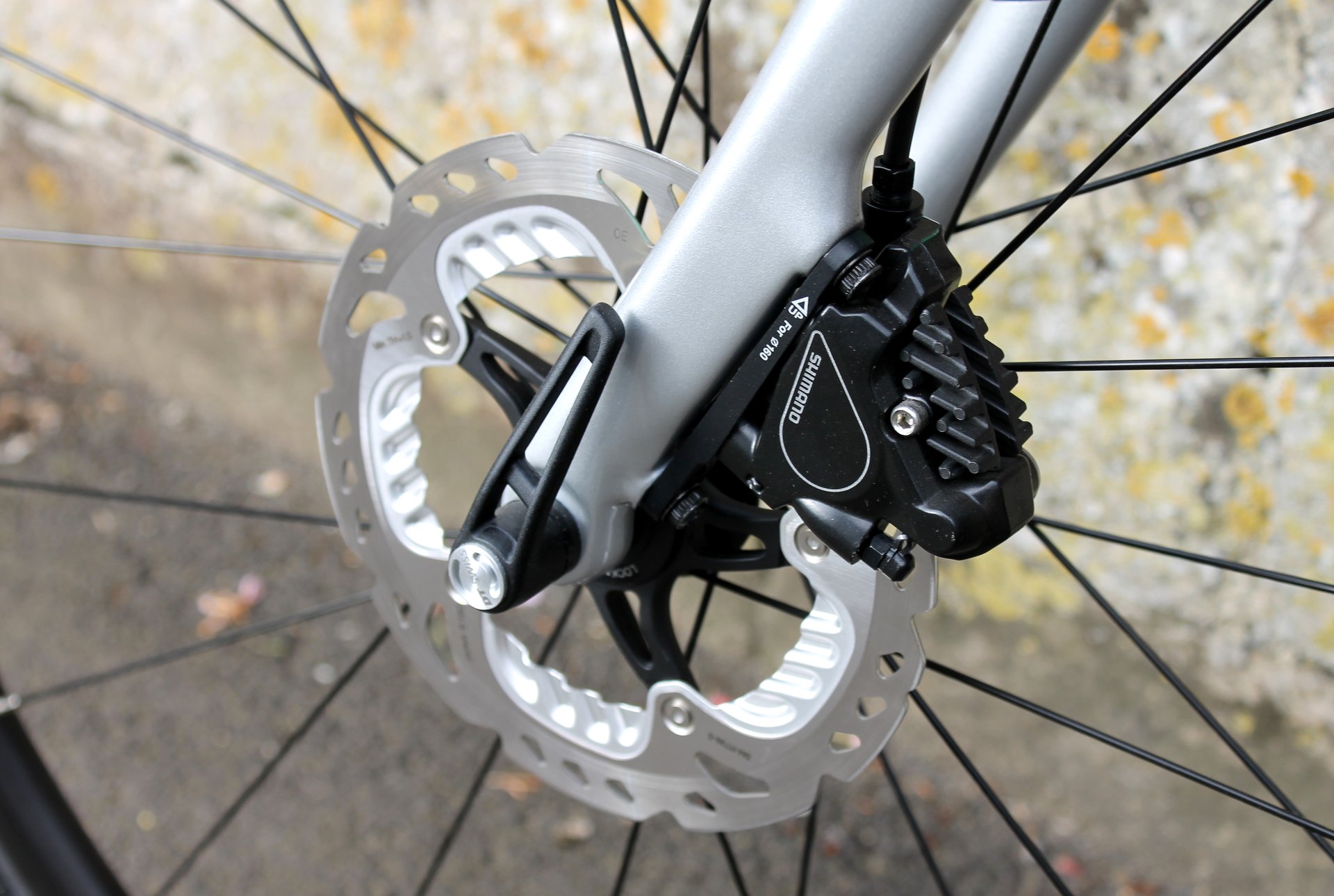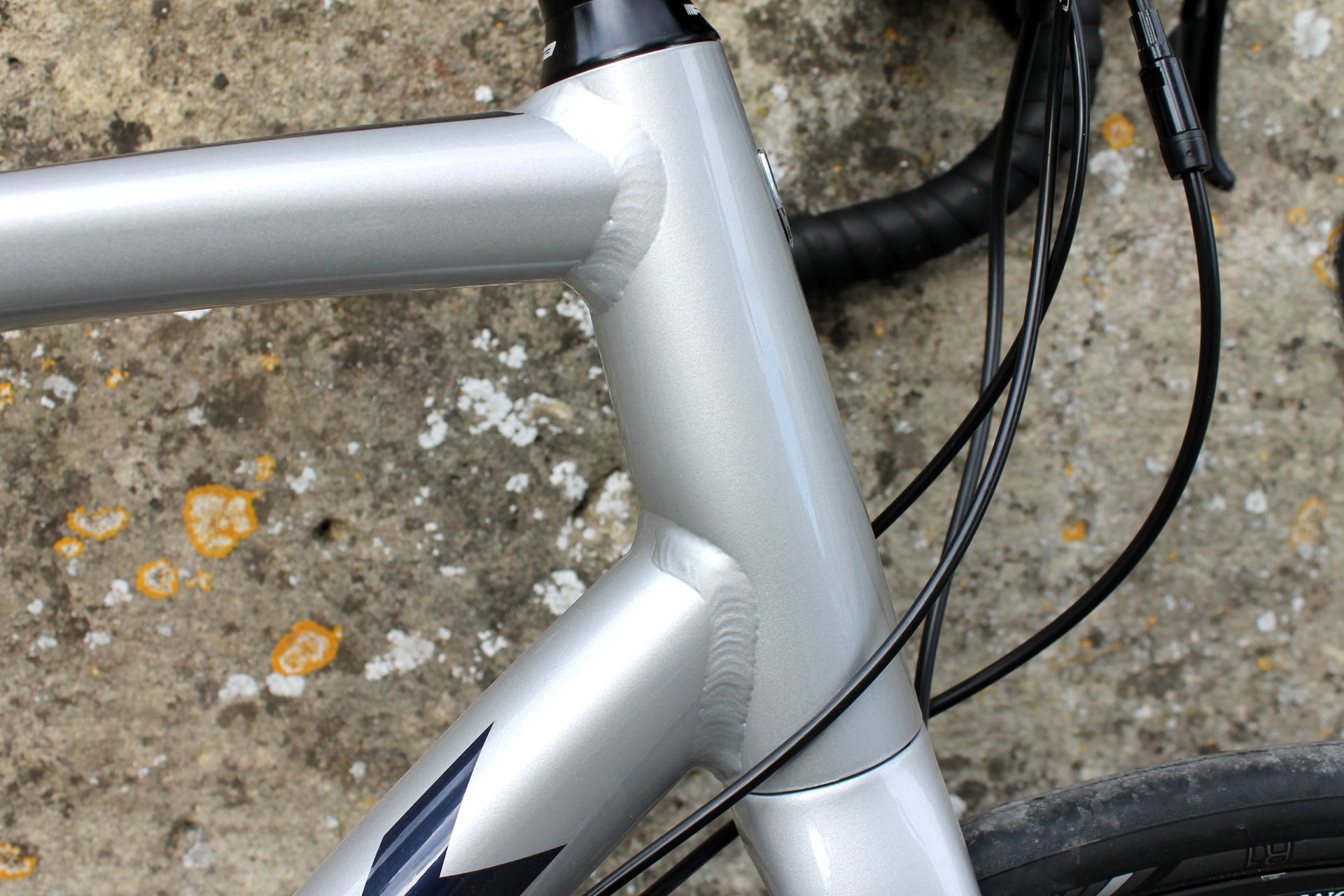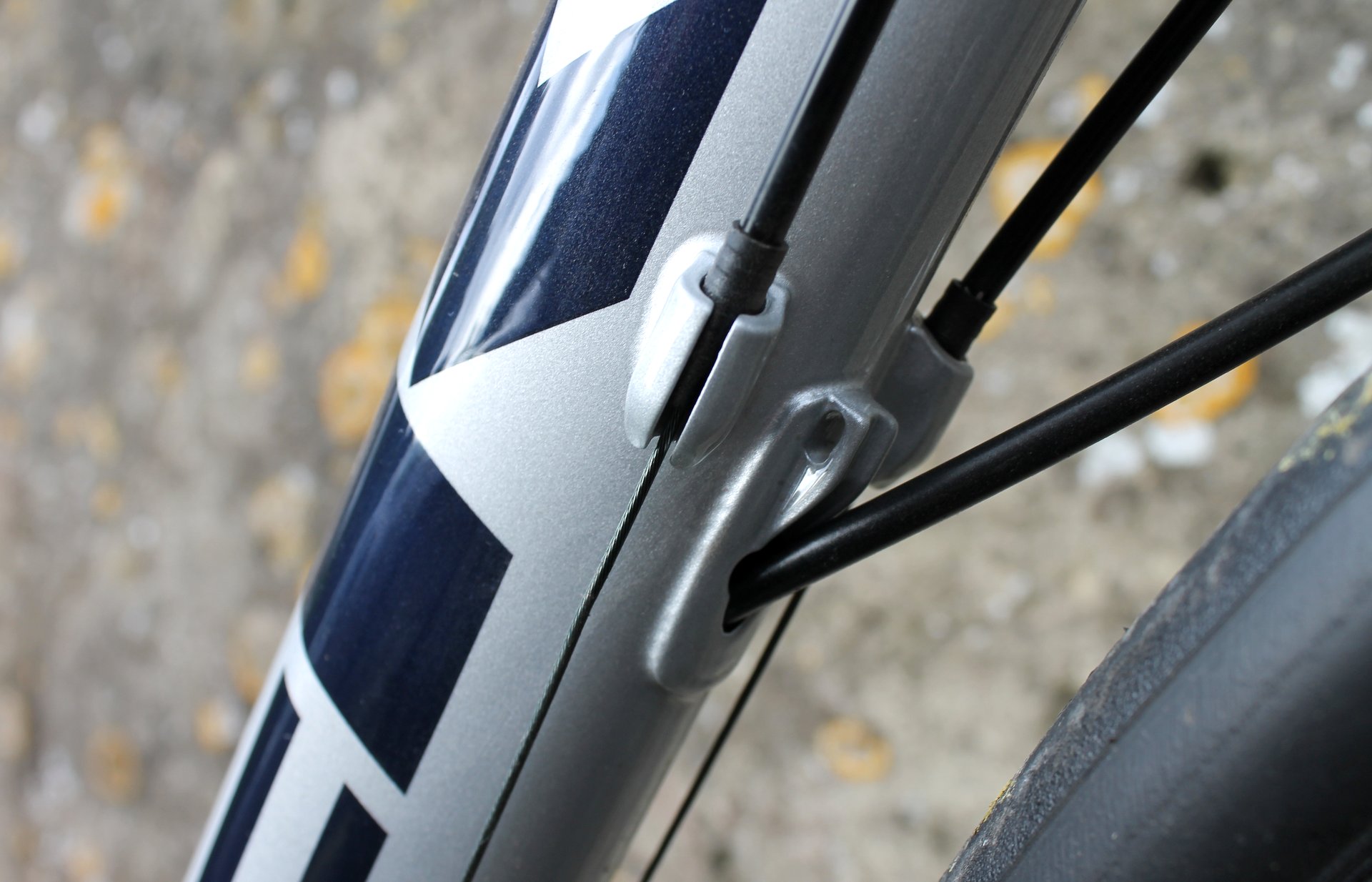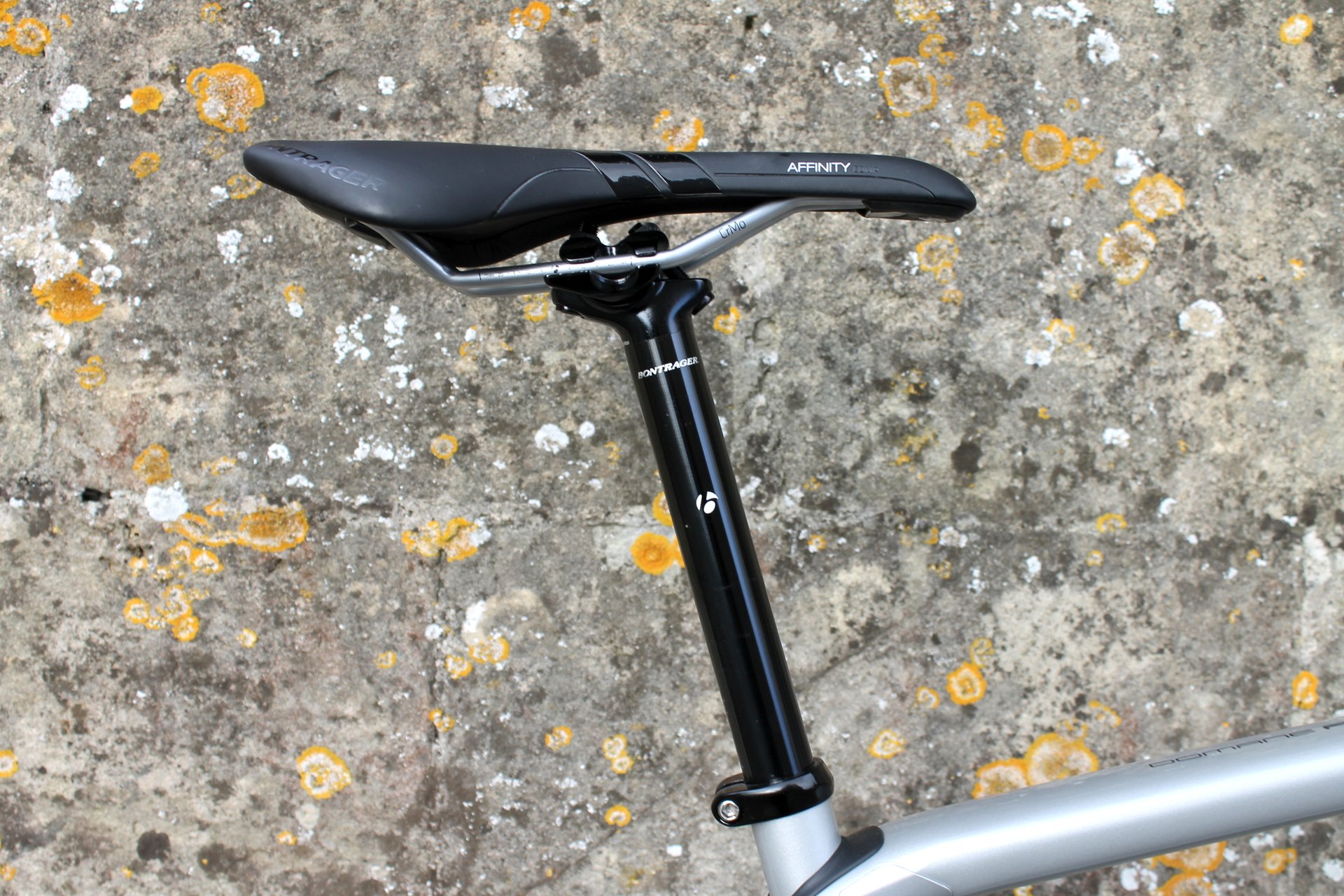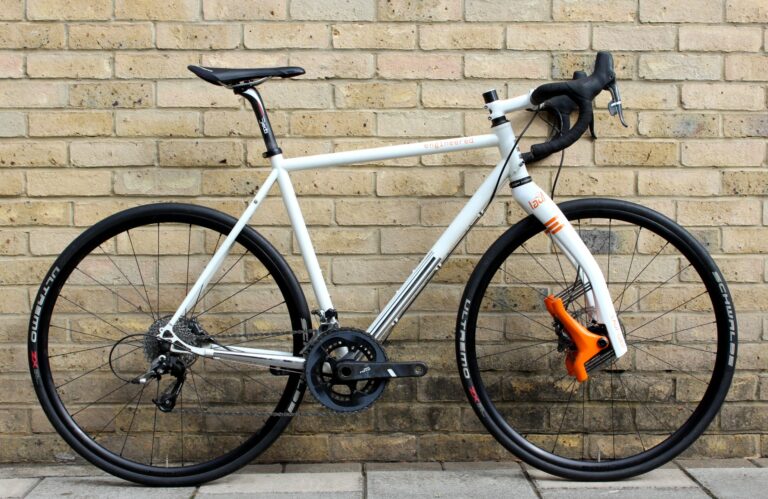Last year, we got our hands on a Trek Domane SLR 6 Disc and put it through its paces. It proved itself a very capable race-endurance bike, with the new front and redesigned rear IsoSpeed decouplers providing next-level ride comfort and smoothness. This is the alloy version of that bike, designed to provide that distinctive Domane ride without the mega price tag.
The endurance geometry is back, as is the older version of the (non-adjustable) rear IsoSpeed decoupler to boost ride comfort. However, that’s where the similarities end – this is an aluminium frameset, complete with a more cost-effective Shimano Tiagra groupset alongside the Japanese firm’s BR-RS405 brake system. Think of it as a budget disc Domane, with premium alloy construction.
It doesn’t look like a budget machine, nor does it ride like one. Instead, what you get is a frame that takes strong cues from the carbon Domane, retaining the compliant yet stiff ride.
Of course, it’s unfair to compare the alloy ALR 4 directly against the carbon SLR 6 bike that retails for £4,000 – this one hits the market at £1,400 – so the question is: can Trek make the alloy Domane as desirable to this portion of the market as the SLR 6 is to the high-end? Let’s find out.
